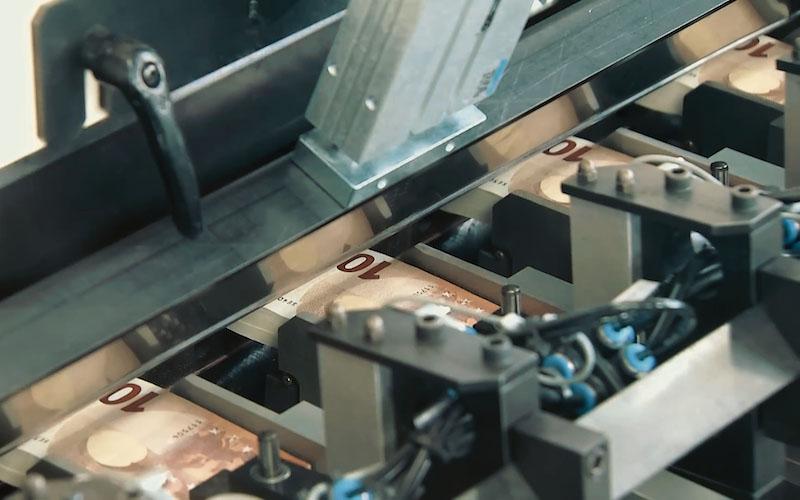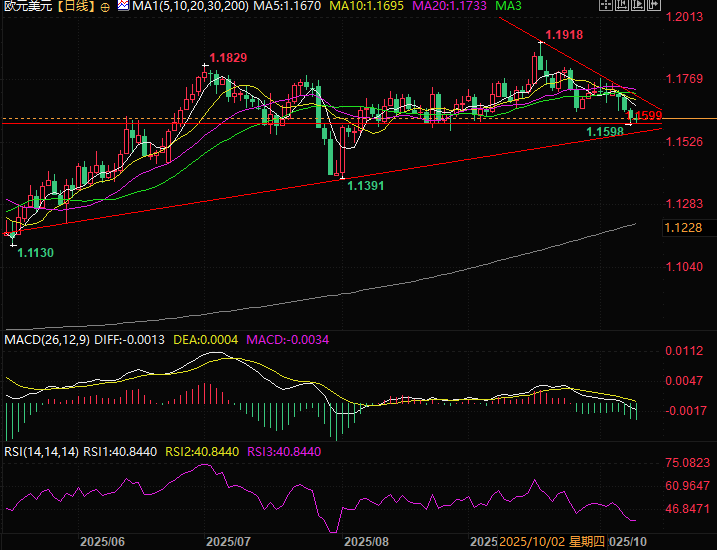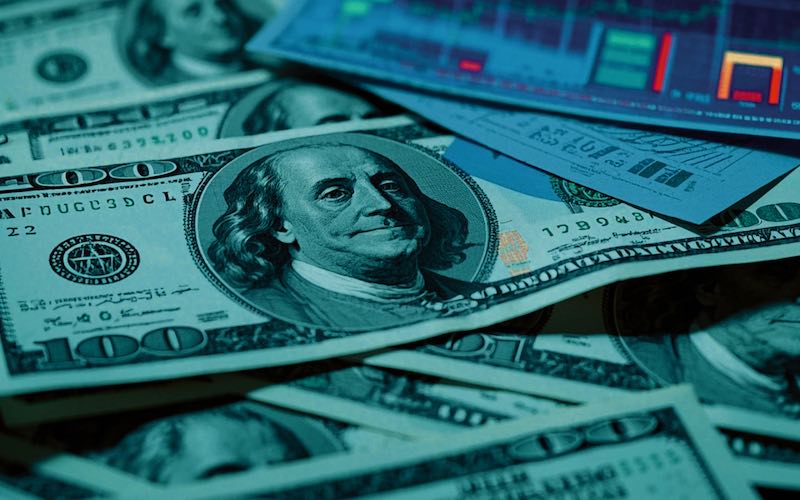The euro's rebound against the US dollar was blocked, but details show that the US dollar is still shaky!
2025-10-09 18:49:06

France's outgoing Prime Minister Sébastien Lecornu reassured markets on Wednesday, saying President Emmanuel Macron would appoint a new prime minister within the next 48 hours and dismissing opposition calls for new elections, arguing there was no parliamentary majority to support them.
In the United States, the government shutdown has entered its eighth day, with negotiations to restore funding remaining stagnant. Amidst the suspension of key economic data, news from the Federal Reserve has become the core fundamental driver. Minutes from the Fed's last meeting, released early Thursday morning, revealed significant challenges facing the central bank in fine-tuning monetary policy: a weakening labor market and rising inflation risks.
It is worth noting that according to a report by Fortune magazine on October 7, a study by Jason Furman, an economist at Harvard University, found that the growth of US GDP in the first half of 2025 was almost entirely driven by data centers and information processing technology. In other areas outside of these technologies, the US growth rate was only 0.1%.
Research data released by Furman on social media shows that in the first half of this year, investment in information processing equipment and software accounted for only 4% of US GDP, but they accounted for 92% of GDP growth. US GDP grew by an average of 1.6% in the first half of the year, but if data centers and information processing technology are excluded, US GDP growth was only 0.1%, almost stagnant.
Several Federal Reserve officials will deliver speeches early Friday morning, providing more clues about the Fed's monetary policy planning. However, in the absence of key economic data, they are unlikely to change the existing market consensus - that the Fed will still implement two interest rate cuts in its remaining monetary policy meetings this year.
Market dynamics at a glance: Improving market sentiment provides breathing space for the euro
Market sentiment improved slightly on Thursday, giving the euro some breathing room, but the euro's downward trend has not been reversed. French President Emmanuel Macron is expected to appoint a new prime minister, but the new prime minister will face the same challenge as the previous five prime ministers - solving the country's budget problem.
Germany's trade surplus in August exceeded market expectations, reaching €17.2 billion, up from €14.2 billion in July. However, the increase was mainly due to a 1.3% drop in imports, which offset a 0.5% drop in exports (which fell short of expectations for the second consecutive month).
Earlier on Wednesday, Germany announced that its industrial output fell 4.3% in August; the trade data and industrial output data together confirmed the weak economic growth momentum of Germany as a core economy in the eurozone, further suppressing the already weakening euro.
In the United States, the minutes of the Federal Reserve's September monetary policy meeting, released early Thursday morning, showed that policymakers were divided on the question of how much easing measures were needed to support economic growth without fueling inflation. The dot plot included in the Fed's Summary of Economic Projections released on September 17th showed that the vote was 10-9 for at least two more rate cuts this year.
On the geopolitical level, Israel and Hamas have reached a ceasefire agreement. Although the agreement seems to lack stability, it has so far contributed to the improvement of market sentiment.
Technical analysis: EUR/USD remains close to the 1.1600 support level
The EUR/USD rebound continues to face selling pressure, maintaining a bearish trend. The previous support level of 1.1650 has now become resistance, limiting the euro's upside potential. With support at 1.1600 now within reach, risks are gradually increasing. The Relative Strength Index (RSI) remains well below 50, indicating significant bearish pressure.
The euro encountered resistance at the 1.1650 level against the US dollar, and this trend confirmed that the bears still dominate the market; however, the support level near 1.1600 (which may have strong support. If this support level is broken, the next target will point to the low of Wednesday, August and the trend line support level coincide with the low of the 22nd and 27th (near 1.1575), and further is the low of August 5th at 1.1530 - however, judging from Wednesday's trend, the 1.1530 level is still out of reach.
EUR/USD's immediate resistance lies in the 1.1645-1.1650 range (the lows of September 25 and October 6), with a breakout of this range putting it in the path of a descending trendline resistance currently around 1.1690. A breakout of this trendline resistance could signal a trend reversal, shifting the market focus to last week's highs of 1.1765-1.1775.

(Euro/USD daily chart, source: Yihuitong)
At 18:30 Beijing time, the euro was trading at 1.1623/24 against the US dollar.
- Risk Warning and Disclaimer
- The market involves risk, and trading may not be suitable for all investors. This article is for reference only and does not constitute personal investment advice, nor does it take into account certain users’ specific investment objectives, financial situation, or other needs. Any investment decisions made based on this information are at your own risk.





















